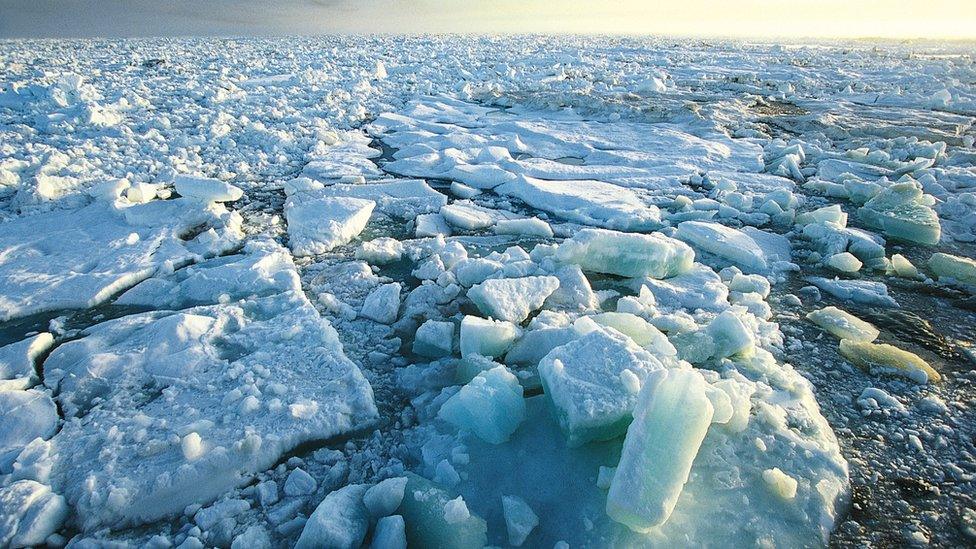Arctic Ocean shipping routes 'to open for months'
- Published
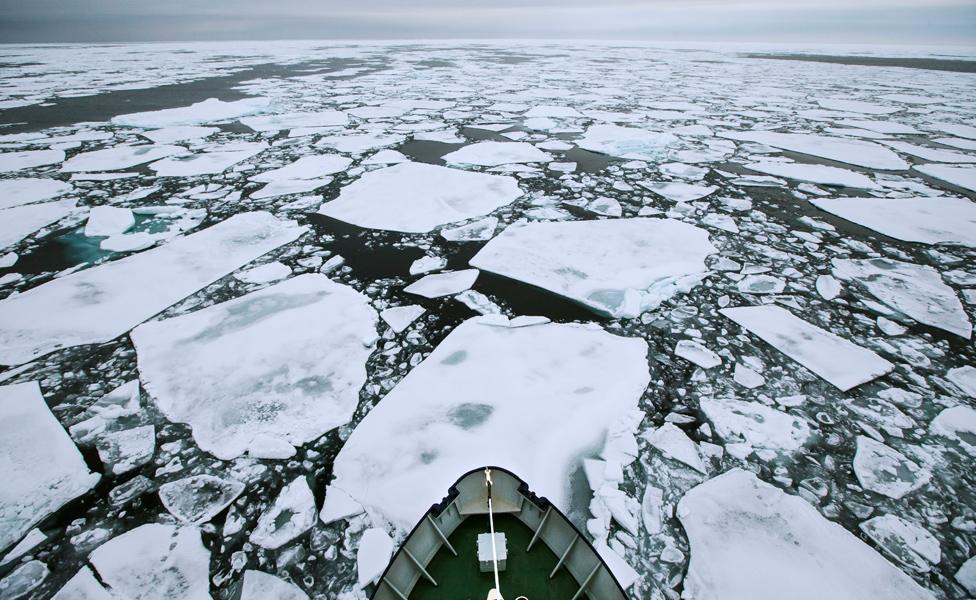
Sea-ice is in decline but scientists expect quite a bit of variability year on year
Shipping routes across the Arctic are going to open up significantly this century even with a best-case reduction in CO2 emissions, a new study suggests, external.
University of Reading, UK, researchers have investigated how the decline in sea-ice, driven by warmer temperatures, will make the region more accessible.
They find that by 2050, opportunities to transit the Arctic will double for non ice-strengthened vessels.
These open-water ships will even be going right over the top at times.
And if CO2 emissions are not curtailed - if the aspirations of the Paris Agreement to keep global temperature rise "well below two degrees" are not implemented - then moderately ice-strengthened vessels could be routinely ploughing across the Arctic by late century for perhaps 10-12 months of the year.
"The reduction in summer sea-ice, perhaps the most striking sign of climate change, may also provide economic opportunities," commented Reading's Dr Nathanael Melia.
"There is renewed interest in trans-Arctic shipping because of potentially reduced costs and journey times between Asia and the Atlantic. So far only a few commercial vessels have utilised these routes as they are not currently reliably open."

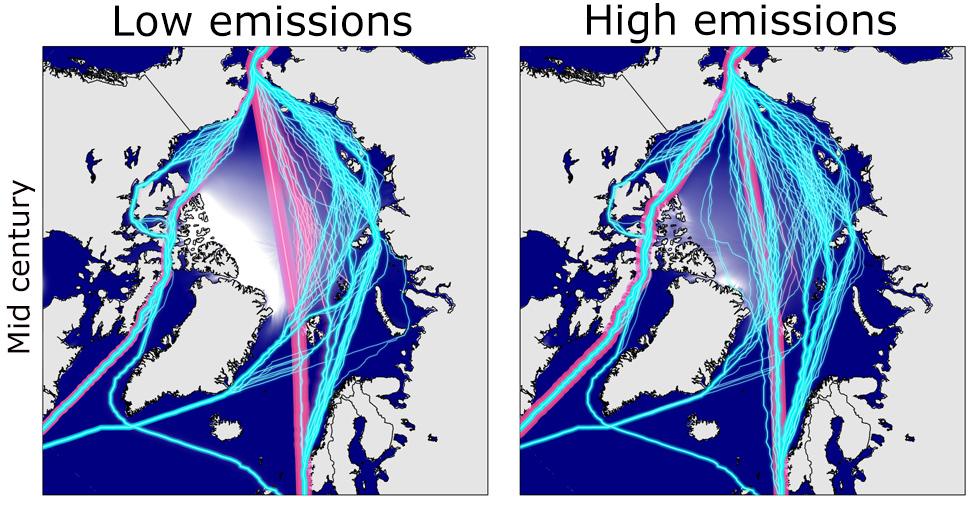
The two maps above look at the possibilities come mid-century
Pink routes are those taken by moderately ice-strengthened vessels
Blue transits are those available to non-specialised shipping
By 2050, these open-water vessels are taking more central routes

Sea-ice is in a committed, long-term decline as the polar north warms.
The traditional September minimum extent is about to be set in the coming days, external, and this year looks on course to be the second lowest in the satellite record.
Researchers do not see this trend being reversed anytime soon.
"If we experience a 2-degree increase in global temperatures, we will get close to an Arctic that is effectively ice-free for part of the year; that's less than a million sq km of ice cover," said Reading's Dr Ed Hawkins.
"So, even if future emissions are consistent with the Paris agreement, it will of course mean shipping routes will be more open. Not every year, but more regularly than they are now."
"Open water vessels won't be hugging the Russian coast quite so much, and ice-strengthened ships will be going right over the pole," he told BBC News.
Saving time
The incentives are clear: if vessels can transit the Arctic, they will shave many days off their journey times between the Pacific and North Atlantic ports, and save fuel.
In addition, by plotting a more central course, they can avoid the fees they would otherwise be charged for going through Siberian waters.
The team has been looking at how the opportunities might evolve in the decades ahead.
The group used five prominent climate computer models and essentially trained them to better reflect the distribution of Arctic sea-ice as seen in current observations.
They then ran those models forward through the century under different emissions scenarios, to gauge where and how frequently shipping routes would become navigable.
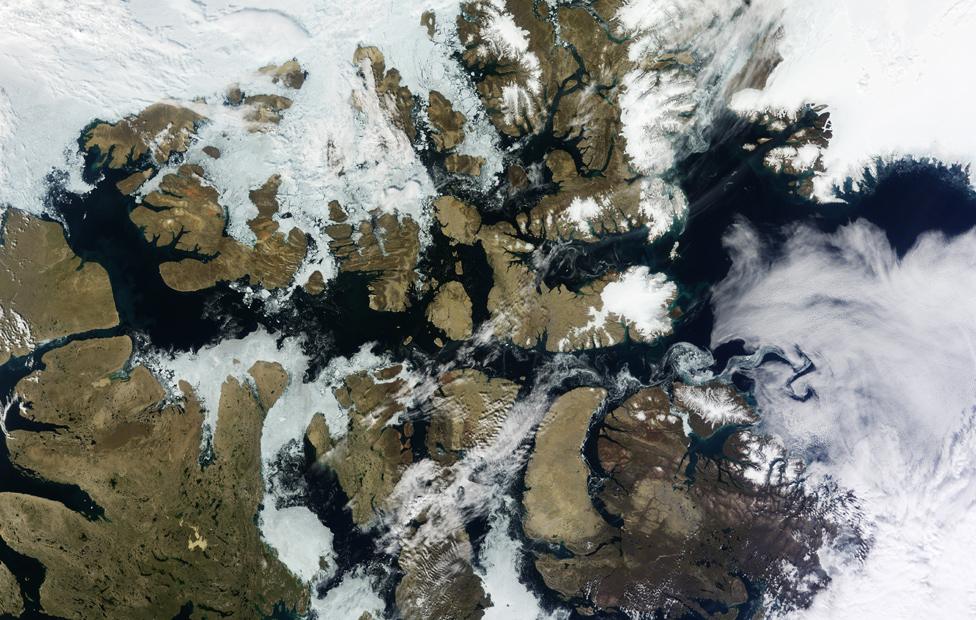
Recent years have seen the North West Passage become navigable
For European shipping companies currently moving cargo through the Suez canal to and from East Asia to Rotterdam, say, the average journey time tends to take a minimum of about 30 days.
But under a Paris-style future, an Arctic shortcut could shave this to 23 days by mid-century and 22 days by late century for non specialised vessels.
And under a high emissions scenario, these transit times come down further to 20 days by 2050 and 17 days by 2100.
The gains are not so great for North Atlantic ports, such as New York, because a route through the fabled North West Passage is not so much shorter than using the Panama Canal - but the Reading team still finds several days' advantage in going by way of the Arctic.
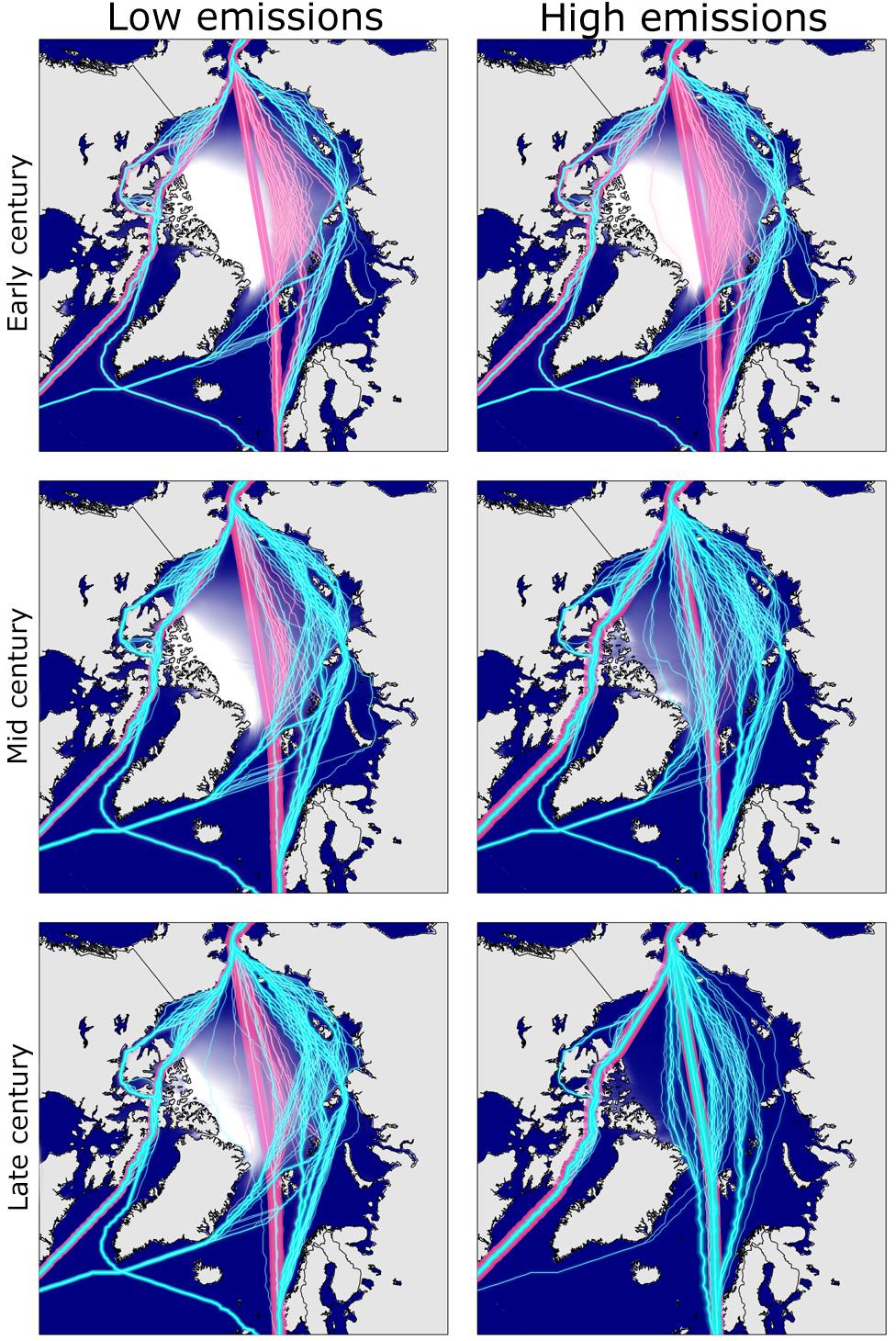
It is not just that routes open up; they are also open for longer as the century progresses
Another key finding from the research is the way the shipping season in the far north will extend as the period of low-ice conditions grows.
The team says that, for a high emissions scenario, trans-Arctic shipping could be potentially commonplace by late century, with navigable routes available even to open water vessels for perhaps 4-8 months a year.
For a low emissions scenario, where global temperatures are stabilised at less than 2 degrees above pre-industrial levels, the frequency with which open-water vessels can make the transits is much wider than today at 2-4 months.
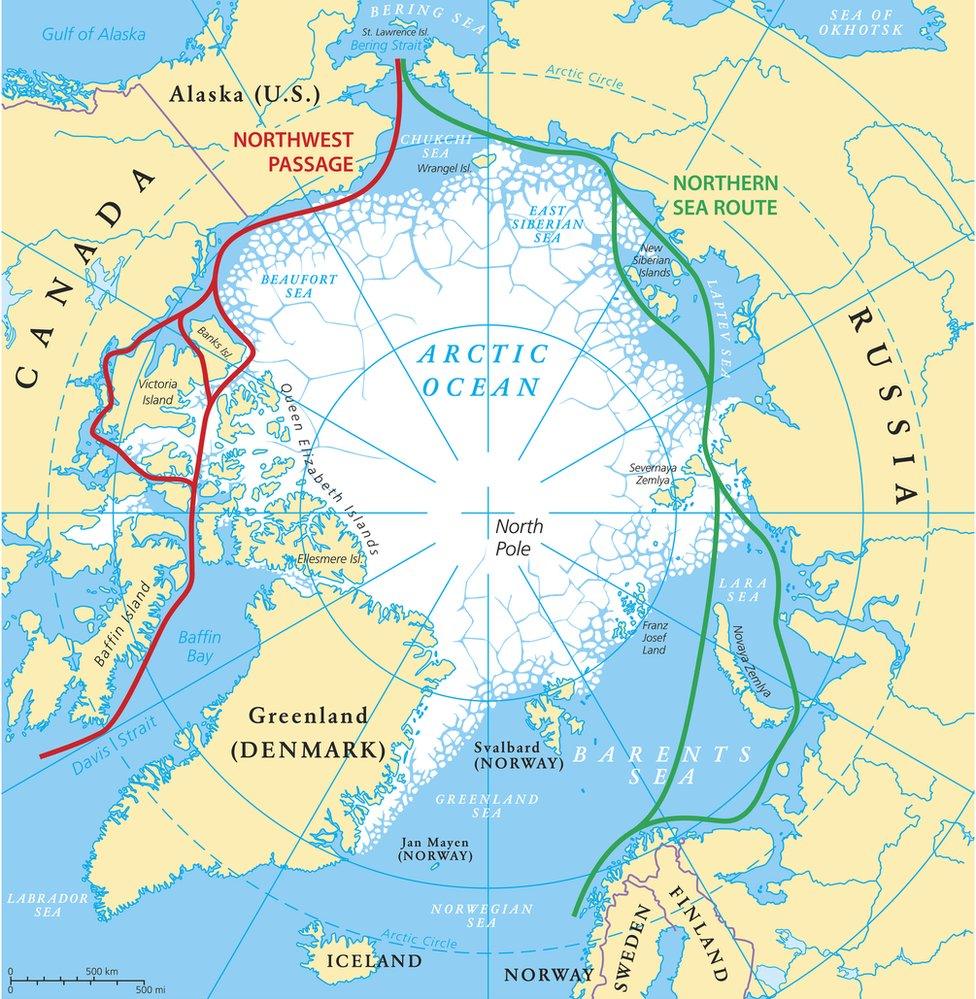
The Reading scientists stress there will always be some sea-ice, especially in winter, and that year-to-year the conditions could be highly variable.
Shipping companies, they say, will weigh several factors before picking a route (e.g. fuel costs, weather, insurance, draft restrictions, cargo type, etc), and may well conclude on occasions that the time saved by going across the Arctic is still not worth it.
This will be especially so if they think there is a possibility of unprotected vessels running into free, fast-moving ice floes.
It is a point picked up by Rachel Tilling, who studies sea-ice using the Cryosat spacecraft. This European Space Agency mission, external produces quick-turn-around maps of floe thickness.
"Now there's evidence that Arctic shipping routes are opening, those wishing to use them will need to know how thick the ice is on a day-to-day basis. We provide this information through our near-real-time data service, which we launched to aid science and maritime activities in the Arctic," the University College of London researcher said.
A paper detailing the Reading study appears in Geophysical Research Letters, external.
Jonathan.Amos-INTERNET@bbc.co.uk, external and follow me on Twitter: @BBCAmos, external
- Published17 June 2016
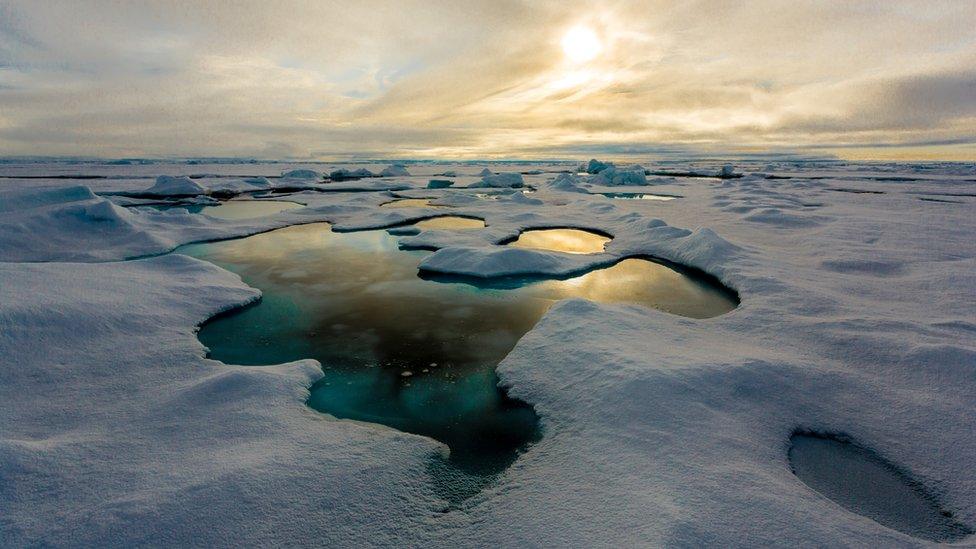
- Published29 June 2016
- Published12 May 2016
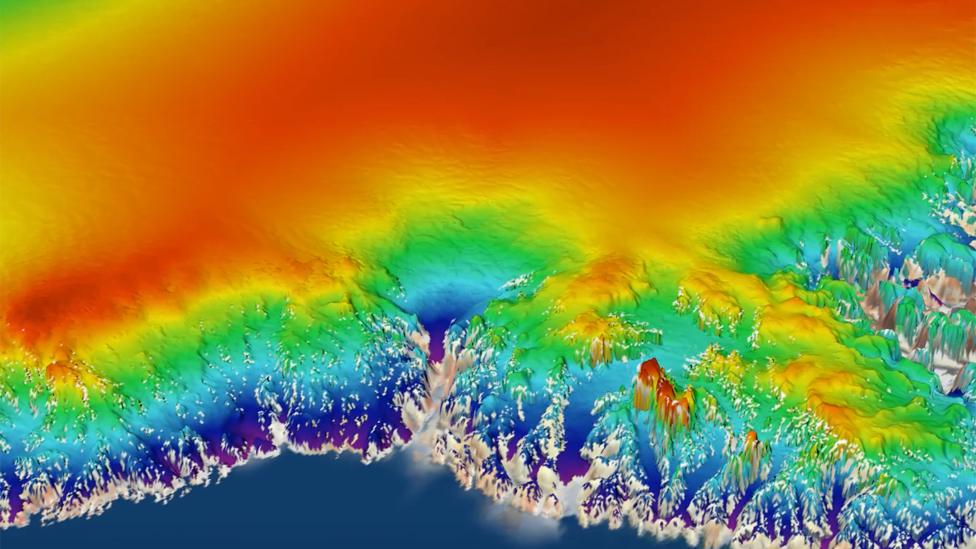
- Published29 March 2016
